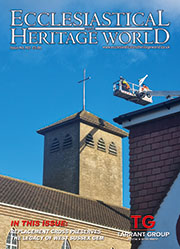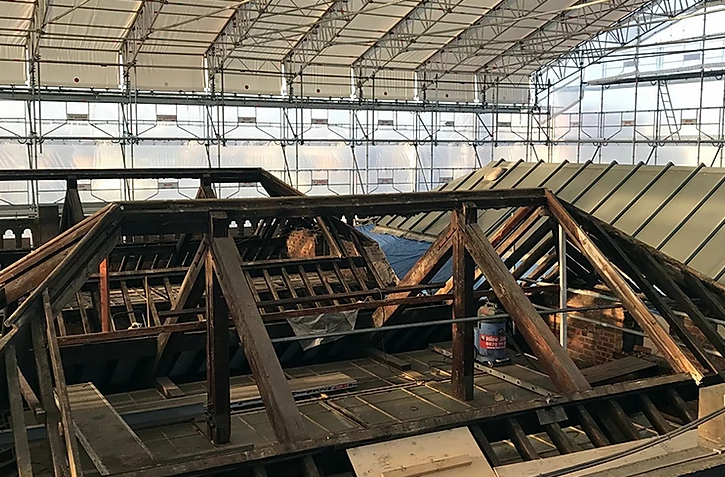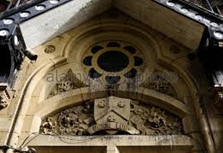Heritage Roofing
Heritage roofing - maintaining our iconic buildings
The UK is home to some of the most iconic buildings in the world, from stunning churches and cathedrals to historic stately homes. Each and every one of these remarkable feats of architecture requires regular maintenance to ensure they remain in the very best condition, allowing them to be enjoyed for generations.
Cathedral Care
Restoration and upkeep of cathedrals
There are some 42 Anglican cathedrals in the UK, not to mention 20 or so Catholic cathedrals. Cathedrals form the most important collection of historic buildings in England. The largest and most ancient are internationally famous, the smallest are usually among the most significant buildings in their region and even the most recent are architectural masterpieces.
Master Craftsmen
Championing our heritage with modern craftsmanship
Twenty years ago, English Heritage (now Historic England) published its first-ever Register of Buildings at Risk across England, which featured nearly 2,000 buildings and monuments that were ‘neglected, broken and unloved’. Recently Historic England was delighted to announce that over two-thirds of those buildings were now safe, in both urban and rural areas right across the country.
Traditional Lime
Lime: it’s better for buildings – and for the environment
It is now fairly well known that cement is not good for old buildings and that lime mortar should be used. But why? What are the advantages and what are the disadvantages? In order to begin to answer those questions it is necessary to understand the nature of traditional building, the process by which buildings used to be built, and how it differs from modern construction, the process by which we build today.
Audio Visual
Audio visual equipment in church buildings
This guidance is issued by the Church Buildings Council under section 55(1)(d) of the Dioceses, Mission and Pastoral Measure 2007. As it is statutory guidance, it must be considered with great care. The standards of good practice set out in the guidance should not be departed from unless the departure is justified by reasons that are spelled out clearly, logically and convincingly.
Read More...
CRE Events
Exhibitors enthuse over the CRE experience
By 4pm on the first day of CRE 24 at the Marshall Arena in Milton Keynes, exhibitors Chris and Kim Dunphy had already had so many helpful and detailed conversations with visitors that they were “completely talked out”.
Insurance
You need to ensure that reasonable precautions are in place at your church to keep it safe for those who use it. To do this, you need to think about what might cause harm to people.
You will then need to decide if the precautions already in place are adequate. If they are not, you may need to identify further action to prevent any danger. When done formally, this is known as a risk assessment.
Church Maintenance
Church maintenance and repair: Calendar of Care
Just as prevention is always better than cure, maintenance is preferable to major repairs. But, such repairs may not always be avoidable. Church Care offers a monthly guide in our coming issues Starting in Spring
We can help you understand the common problems and areas that need your special attention, and give you tips for regular maintenance schemes.
Pest Control
Michael Palin warns of pest threat to churches
Michael Palin is supporting the future of the UK’s historic churches and chapels with a voiceover for a new animated film. The 80 second animation, produced for the National Churches Trust, highlights why churches are some of the nation’s best loved buildings.
Town Halls
The history of the great Victorian Town Halls of Northern England
From industrial squalor to civic pride, the story behind some of the most impressive buildings of the North involve a unique mix of economics, grand designs and noble sentiments within communities.
Lead Roofing
Lead is one of the oldest materials in the roofing industry and is still commonly used throughout the world today.
Lead roofing is a traditional roofing method which has been used in the industry for hundreds of years, and is therefore proven to be extremely reliable. Lead roofing, and sand-cast lead, in particular is ideal for old buildings such as churches or historical renovations, whereas milled lead roofing is a mass-produced alternative, used for precision and accuracy in homes and commercial buildings alike.
Lightning Protection
When lightning strikes are you protected against this act of God?
The issue of lightning protection in churches is one that has exercised this publication for many years. In this four-part series of spotlights on the issue we will be revisiting various aspects of the subject, beginning with an overview of current thinking.
SEARCH OUR DIRECTORY
Restoration and upkeep of cathedrals
 There are some 42 Anglican cathedrals in the UK, not to mention 20 or so Catholic cathedrals. Cathedrals form the most important collection of historic buildings in England. The largest and most ancient are internationally famous, the smallest are usually among the most significant buildings in their region and even the most recent are architectural masterpieces.
There are some 42 Anglican cathedrals in the UK, not to mention 20 or so Catholic cathedrals. Cathedrals form the most important collection of historic buildings in England. The largest and most ancient are internationally famous, the smallest are usually among the most significant buildings in their region and even the most recent are architectural masterpieces.
Cathedrals and their precincts form archaeological sites of outstanding interest; function as centres of artistic patronage and craft skills; and hold in their collections books and works of art of worldwide importance. In addition to their beauty and architectural significance, cathedrals generate more than £220 million for the national economy; employ more than 7,000 people, and benefit from the contribution of nearly 15,000 volunteers. They welcome more than 11 million adults (27% of the UK population) and more than 300,000 schoolchildren each year. And cathedrals do all of this while remaining in use for their original and central purpose: the worship of God.
Most Precious Blood Catholic Church, Southwark gets new internal and external lighting
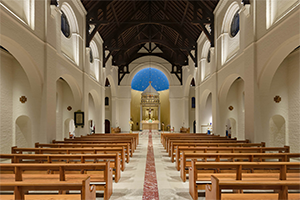
The Catholic Parish of the Most Precious Blood was founded in 1891 by Bishop Butt and designed by architect Frederick Arthur Walters (1849–1931) who designed over 50 churches in his career.
The clients provided a clear brief to CES Lighting and Electrical Specialists: "The overall effect we are aiming for in the church is one of 'Cistercian' simplicity and calmness punctuated by highlighted areas of religious/spiritual significance. The architecture of the building is already strong in both scale and form and does not of itself require any particular highlighting or enhancement."
LED Conversion at Grade 1 listed St John the Baptist Church, London
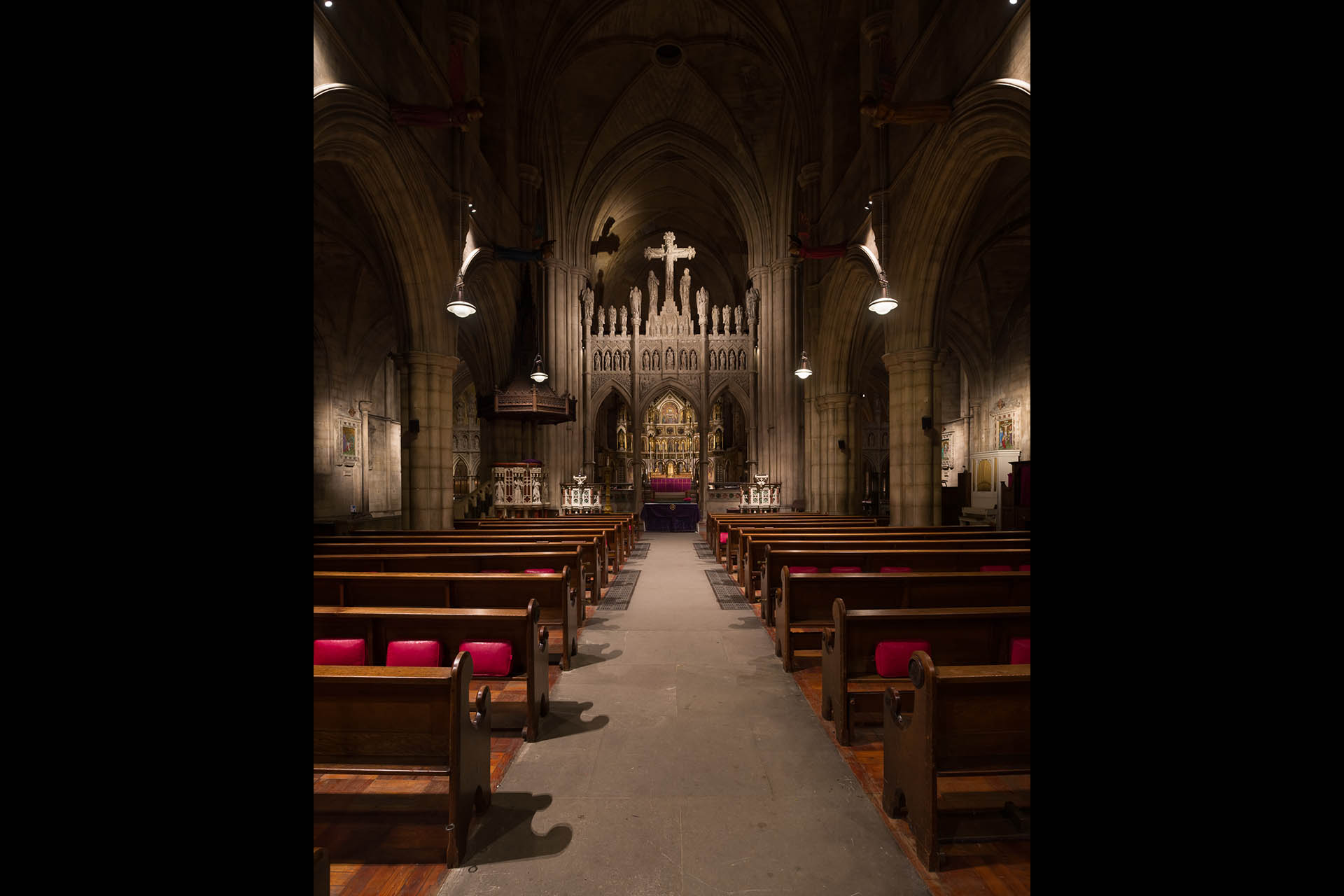
St John the Baptist Church, Holland Road in London is Grade I listed, embedded between the urban landscapes of Shepherd’s Bush and Holland Park. The church is an impressive example of Victorian Gothic Revival built from 1870 by architect James Brooks.
Surrey-based CES Lighting & Electrical Specialists were approached to address the lighting within the church which was no longer suitable for the running of the services and other church activities. Due to the architecture and location of fittings maintenance was an ever-present issue.
What makes better outdoor seating than…an oast cowl?
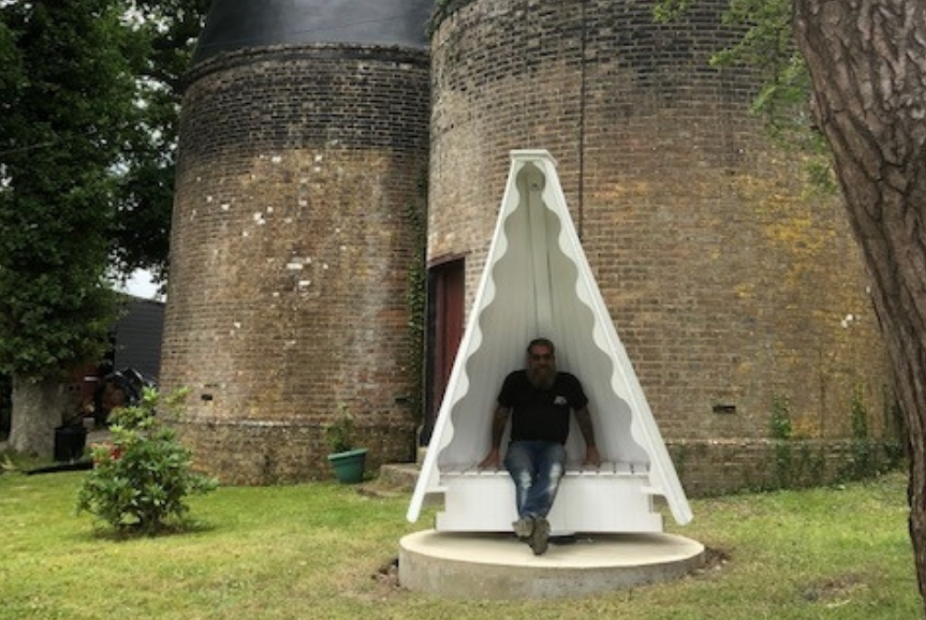 Did you know that oast cowl specialists Dude and Arnette also do bespoke features? That’s right; every so often they get requests from clients to build something unique for them and it’s always great fun for the team. It not only allows them to put their tried-and-tested skills to good use, but also to flex their creative muscles to bring ideas to life.
Did you know that oast cowl specialists Dude and Arnette also do bespoke features? That’s right; every so often they get requests from clients to build something unique for them and it’s always great fun for the team. It not only allows them to put their tried-and-tested skills to good use, but also to flex their creative muscles to bring ideas to life.
Curo Construction enters final phase of refurbishment work at the British Museum
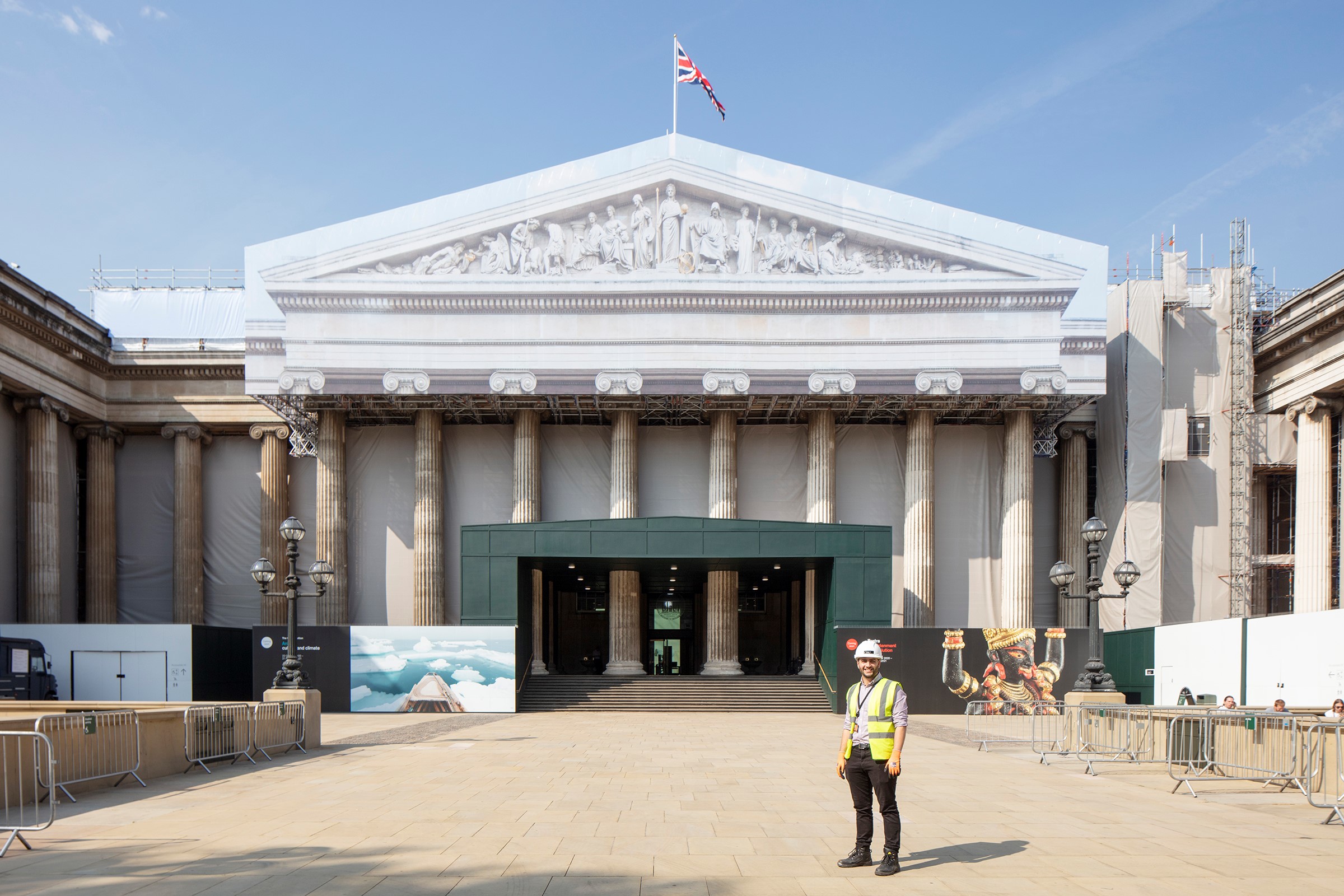 Curo Construction, a privately-owned construction company predominately operating in Central London, has been selected as Principal Contractor to embark on essential refurbishments of the South Colonnade at the British Museum, a Grade I Listed estate. Essential refurbishment and building conservation works are being undertaken, which include the replacement of the copper roof finish to the South Colonnade.
Curo Construction, a privately-owned construction company predominately operating in Central London, has been selected as Principal Contractor to embark on essential refurbishments of the South Colonnade at the British Museum, a Grade I Listed estate. Essential refurbishment and building conservation works are being undertaken, which include the replacement of the copper roof finish to the South Colonnade.
An introduction to the Mastic Asphalt Council (MAC)
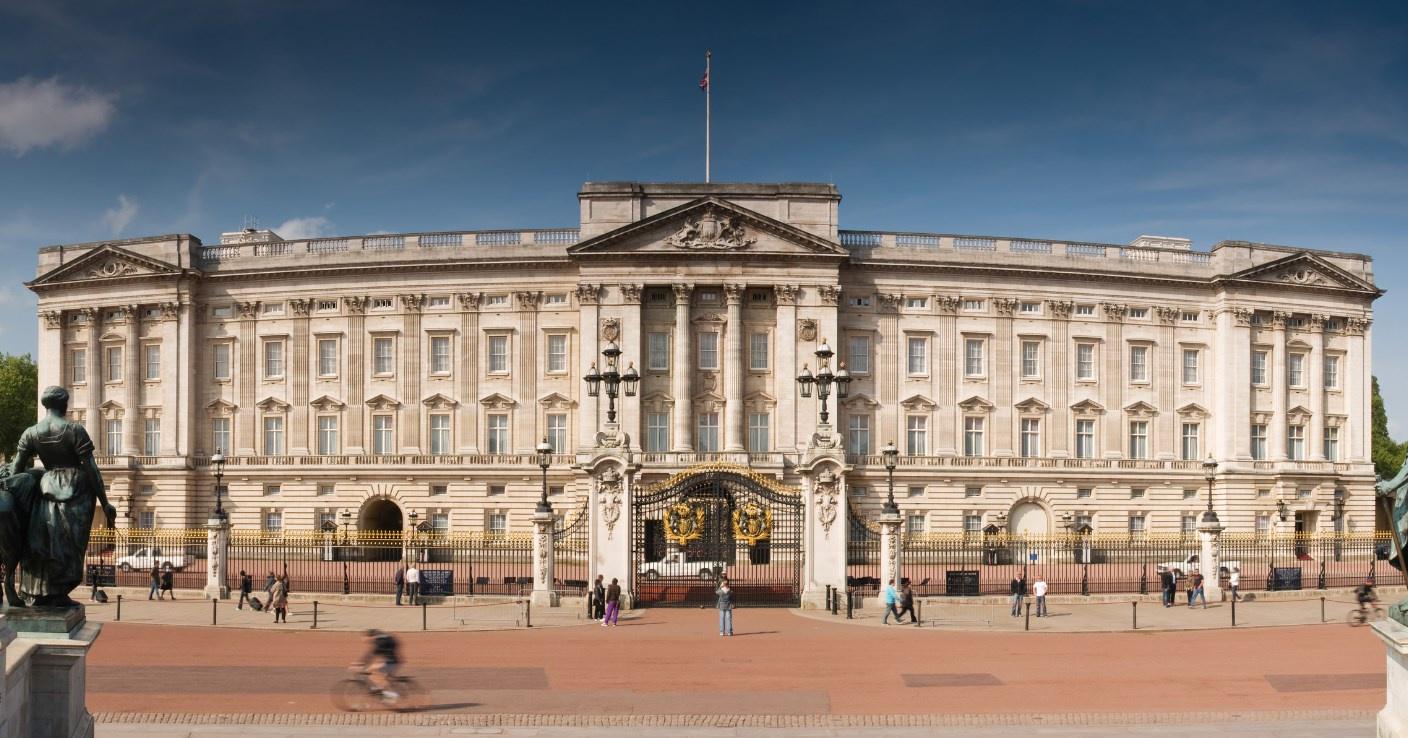 The Mastic Asphalt Council (MAC) is the trade association for the UK mastic asphalt industry. MAC represents more than 90 companies - including mastic asphalt manufacturers, the contractors responsible for its installation, and associated suppliers of equipment and services.
The Mastic Asphalt Council (MAC) is the trade association for the UK mastic asphalt industry. MAC represents more than 90 companies - including mastic asphalt manufacturers, the contractors responsible for its installation, and associated suppliers of equipment and services.
Top quality products, design and workmanship are fundamental to the Mastic Asphalt Council. MAC membership is only open to those manufacturers and contractors that can satisfy the stringent quality requirements. These strict membership requirements enable MAC to justifiably claim that it represents the UK’s top 70 mastic asphalt contractors, as well as leading manufacturers.
Derby’s best-known family business clocks up triple awards success
 There was A triple celebration at the Family Business of the Year Awards for Smith of Derby Ltd, who scooped no fewer than three awards – including the top award.
There was A triple celebration at the Family Business of the Year Awards for Smith of Derby Ltd, who scooped no fewer than three awards – including the top award.
The awards are a celebration of British family-owned businesses across the UK, recognising the contribution they make to the economy, as well as the thousands of jobs they support. This year a virtual awards ceremony was held live across the internet.
Sustainability and energy efficiency in historic buildings and churches

There are some relatively easy steps which will cut your church's use of electricity and gas/oil, and your utility bills.
Download the guidance for advice about adjustments to your radiators, heating system and lighting as well as 'soft' changes such as cushions and draught-proofing.
 Application of Part L of the Building Regulations to Historic and Traditionally Constructed Buildings
Application of Part L of the Building Regulations to Historic and Traditionally Constructed Buildings
Historic England supports the Government’s aims to improve the energy efficiency of existing buildings through Part L of the Building Regulations. Many improvements can be carried out, often at a relatively low cost, significantly enhancing the comfort of the building for its users, as well as providing savings on fuel bills and helping to meet greenhouse gas emission reduction targets. Improving energy and carbon performance may also give a welcome opportunity to protect and enhance a historic building and ensure that it remains viable into the future.
For historic buildings a balance needs to be achieved between improving energy efficiency and avoiding damage both to the significance of the building and its fabric. Taking a ‘whole building approach’ can achieve significant improvements in most cases, although not always to the standards recommended in the Regulations. Achieving an appropriate balance requires an understanding of the Regulations and the building, particularly the point at which alteration to the building’s character and significance becomes unacceptable.
The Building Regulations Approved Documents for Part L make it clear that a reasonable compromise on the energy efficiency targets may be acceptable in order to preserve character and appearance and to avoid technical risks. They do this by specifically including some ‘exemptions’ and circumstances where ‘special considerations’ apply for historic buildings and those of traditional construction.
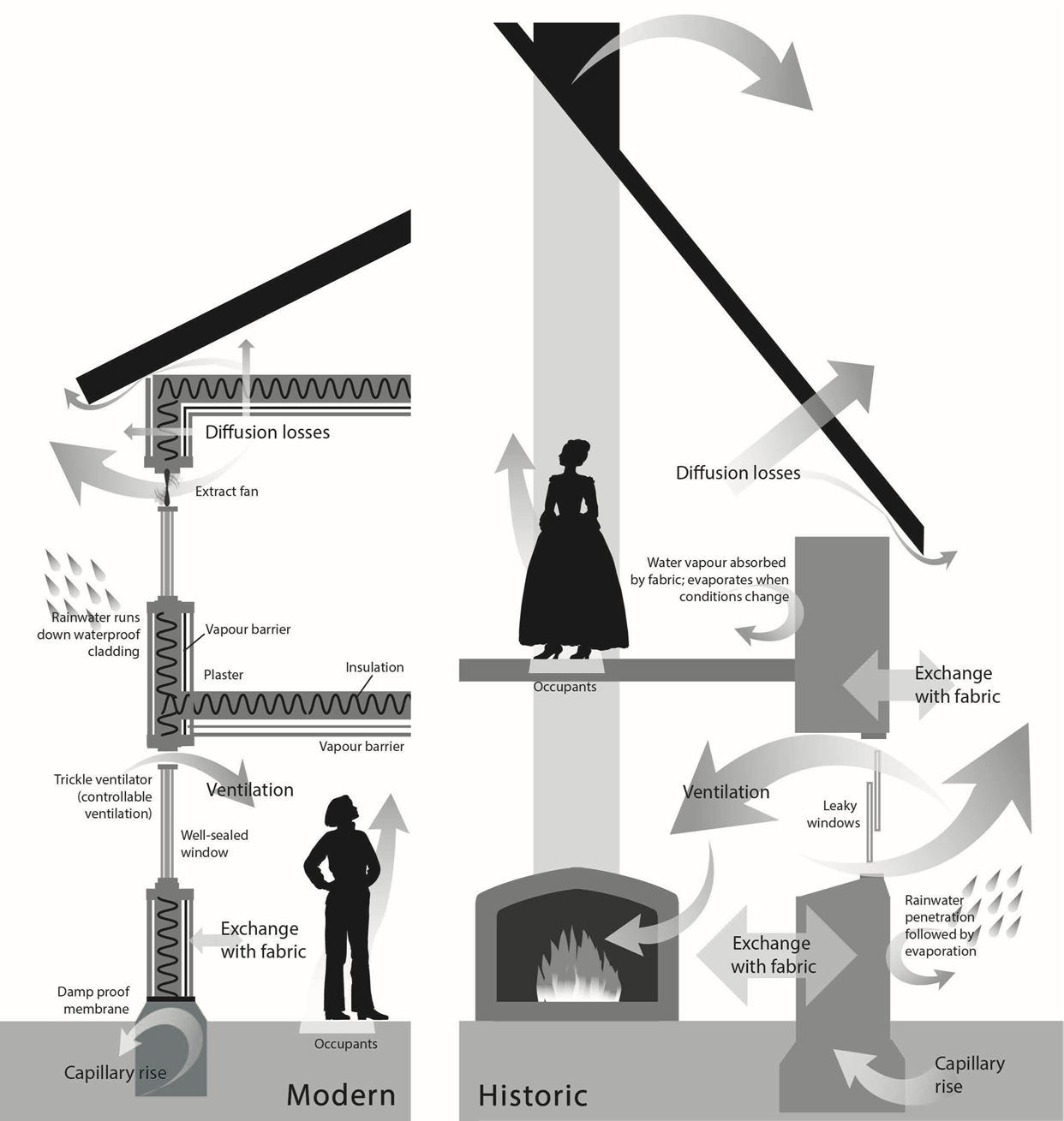 Typical differences in the movement of moisture for a historic building and a modern buildingFull details in Historic England’s guide here.
Typical differences in the movement of moisture for a historic building and a modern buildingFull details in Historic England’s guide here.
The regulations will have an update coming into effect in June 2022 with certain changes to places of worship and heritage buildings. More information to follow.
We invite contributions from solution providers and experts in the sector who welcome this marketing opportunity. Contact Richard Shepherd email This email address is being protected from spambots. You need JavaScript enabled to view it. for further information.
Radiator heating project completed at St Mary’s Church in Walkern
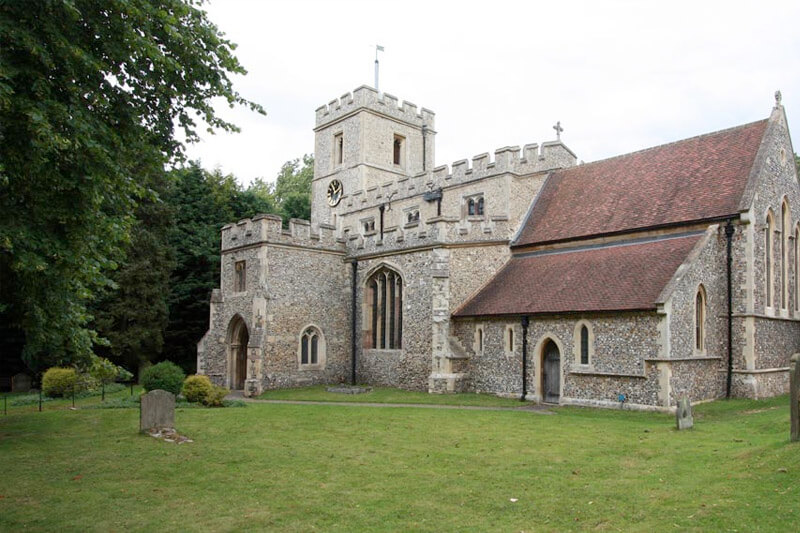 The ChurchEcoMiser team completed a 22 radiator church heating installation project at St Mary’s Church in Walkern.
The ChurchEcoMiser team completed a 22 radiator church heating installation project at St Mary’s Church in Walkern.
In August of 2021 the ChurchEcoMiser team started work at St Mary’s church in Walkern.
The original heating system was installed towards the end of the 19th century and needed updating.
Heating installation completed at St James Church, Midhopestones
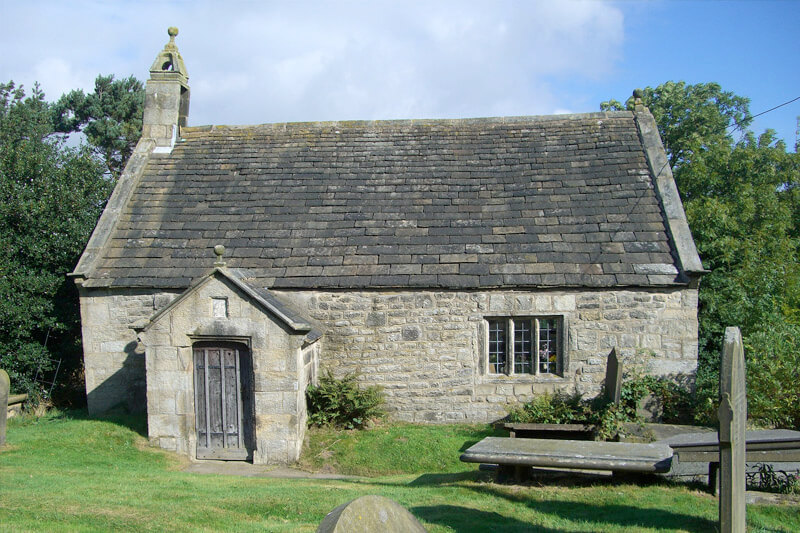 The ChurchEcoMiser team completed a church heating installation project at St James Church in Midhopestones.
The ChurchEcoMiser team completed a church heating installation project at St James Church in Midhopestones.
The church had a low pressure coal fired heating system installed in the refurbishment of 1892 which fell into disrepair in the 1980’s. For the last 40 years, the church had been heated with an industrial warm air unit sited in a room adjoining the east end of the church but this reached the end of its natural life.
The Anglican Diocese of Exeter
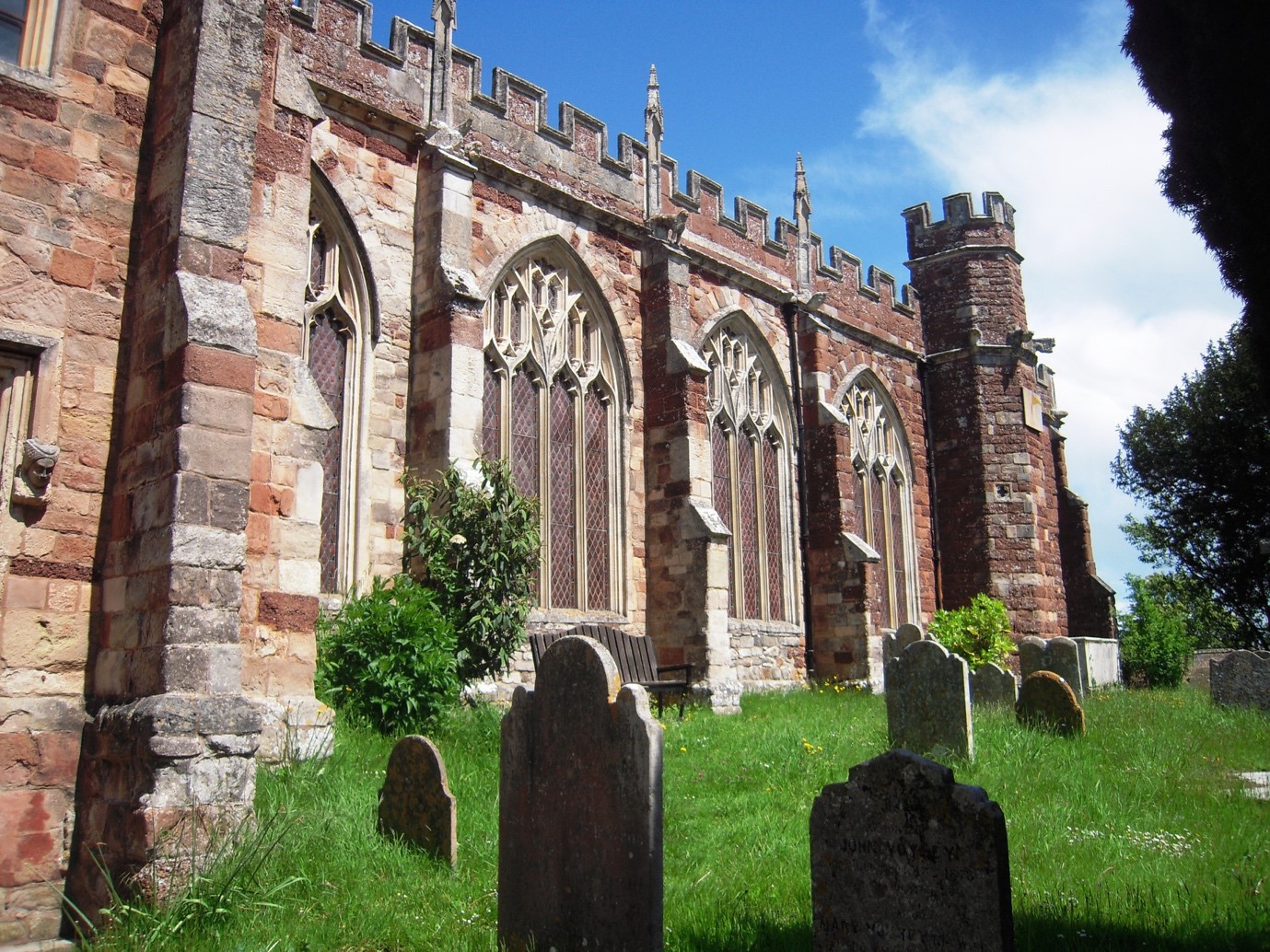 As the Christian Resources Exhibition comes to Exeter, we thought we should take a look at the Anglican Diocese of Exeter.
As the Christian Resources Exhibition comes to Exeter, we thought we should take a look at the Anglican Diocese of Exeter.
Church Buildings and Churchyards
There are 605 church buildings in the Diocese of Exeter and each represents the lives of thousands of people who have worshipped, celebrated and mourned there. Many are historic listed buildings and their care and maintenance can be one of the greatest challenges that congregations face.
Stop churches from suffering the effects of lightning
 Direct Strike Ltd are a business that specialises in safeguarding people and properties against lightning. As a result, they feel that it is their duty to do whatever they can for their customers. One thing they do for them is supply the most effective lightning protection testing Carlisle has to offer. The team carries out comprehensive checks and leaves nothing out.
Direct Strike Ltd are a business that specialises in safeguarding people and properties against lightning. As a result, they feel that it is their duty to do whatever they can for their customers. One thing they do for them is supply the most effective lightning protection testing Carlisle has to offer. The team carries out comprehensive checks and leaves nothing out.
Exciting line-up announced for ISCVEx 2025 seminars
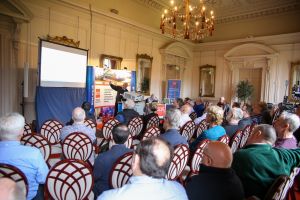 The Institute of Sound, Communications and Visual Engineers is thrilled to announce the seminar line-up for ISCVEx 2025, scheduled for 25-26 March at the stunning Coombe Abbey Hotel, Binley, near Coventry. Next year’s event promises to be a must-attend for professionals in the sound, communications and audio-visual industries.
The Institute of Sound, Communications and Visual Engineers is thrilled to announce the seminar line-up for ISCVEx 2025, scheduled for 25-26 March at the stunning Coombe Abbey Hotel, Binley, near Coventry. Next year’s event promises to be a must-attend for professionals in the sound, communications and audio-visual industries.
Following the AGM and Members' Day, the event will kick off with a networking dinner on 25 March. The second day will feature an exhibition from over 30 leading manufacturers and distributors, alongside three engaging seminars from top industry minds.
First choice for restoration of Historic England's York HQ
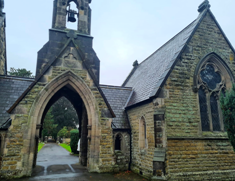 CG Building and Restoration Ltd is a trusted and highly skilled building contractor with a strong track record in the delivery of residential, commercial and restoration projects.
CG Building and Restoration Ltd is a trusted and highly skilled building contractor with a strong track record in the delivery of residential, commercial and restoration projects.
Founded by Vernon Carter in 2013, they have grown to become a leading building contractor with a professional and experienced team equipped with the perfect combination of skills. With offices based both in York and Ryedale, they are able to provide services throughout Yorkshire. CG were recently the first choice to restore Historic England's Headquarters in York.
Becket's Chapel - an abridged account of the last two years in its long history...
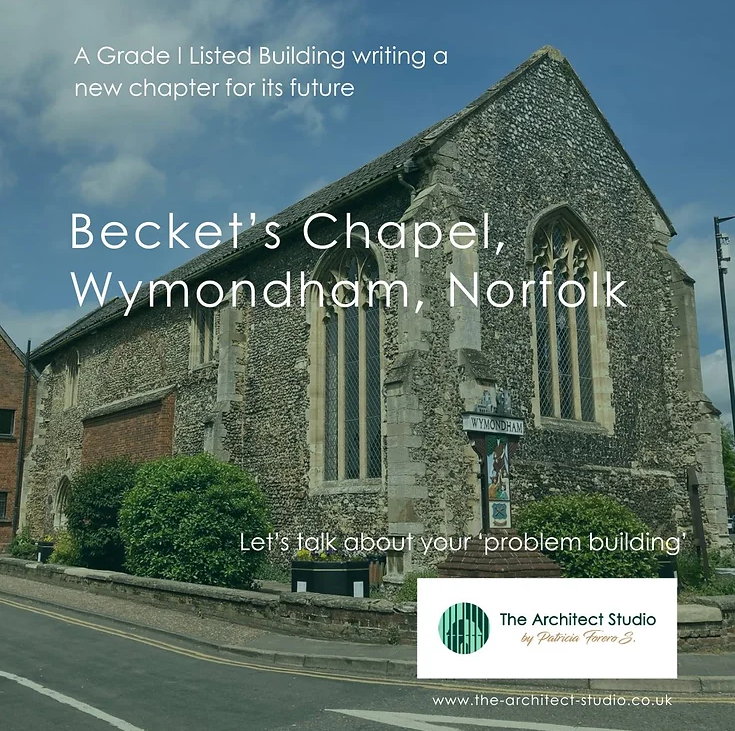
Becket's Chapel, a Grade I listed building in Wymondham, Norfolk, stands out as one of eight national climate adaptation case studies backed by Historic England. The project has also been selected as a 2025 Regional Finalist in the Civic Trust Awards in the AABC Conservation category. Winners will be announced in early January.
Patricia Forero, AABC-accredited architect and director of The Architect Studio in Cambridgeshire, takes up the story.
‘You gotta move..!’ New dates for CRE South West are 23-24 June 2021
 The Bible brims over with people told to move. Abraham was sent out, not knowing where he was going. Moses led an entire nation on that long and winding road out of Egypt. Jonah, via a rather large fish, reluctantly returned to Nineveh. Not forgetting the apostles of the New Testament. Or, as Revd Gary Davis sang in his classic \African-American spiritual: ‘When God get ready… you gotta move.’
The Bible brims over with people told to move. Abraham was sent out, not knowing where he was going. Moses led an entire nation on that long and winding road out of Egypt. Jonah, via a rather large fish, reluctantly returned to Nineveh. Not forgetting the apostles of the New Testament. Or, as Revd Gary Davis sang in his classic \African-American spiritual: ‘When God get ready… you gotta move.’
London’s Heritage
 Historic England has published its annual Heritage at Risk Register for 2022. The Register is the yearly health-check of England’s most valued historic places and those most at risk of being lost forever as a result of neglect, decay or inappropriate development.
Historic England has published its annual Heritage at Risk Register for 2022. The Register is the yearly health-check of England’s most valued historic places and those most at risk of being lost forever as a result of neglect, decay or inappropriate development.
To find out more click here
 London is one of the world’s most famous cities. It’s a centre for everything from fashion to finance, politics to pop music, and monarchy to the media – and it’s been at the heart of English history for thousands of years.
London is one of the world’s most famous cities. It’s a centre for everything from fashion to finance, politics to pop music, and monarchy to the media – and it’s been at the heart of English history for thousands of years.
Our next issue sees a focus on some of the current restoration projects taking place in the capital.
We will be looking at the restoration work taking place in our UK Parliament and spotlight work carried out under the guidance and supervision of the Heritage of London Trust. There will also be a focus on projects listed by Historic England as being at risk.
 The Palace of Westminster, or the Houses of Parliament as it is also known, has changed dramatically over the course of nearly a thousand years of history. Transformed from royal residence to the home of a modern democracy, the architecture and cultural collections of the Palace and the wider Parliamentary Estate have continually evolved, sometimes by design, sometimes through accident or attack.
The Palace of Westminster, or the Houses of Parliament as it is also known, has changed dramatically over the course of nearly a thousand years of history. Transformed from royal residence to the home of a modern democracy, the architecture and cultural collections of the Palace and the wider Parliamentary Estate have continually evolved, sometimes by design, sometimes through accident or attack.
We will be looking at some of the restoration projects and here are just a couple of examples.
Historic St Stephen’s Hall ceiling shines again as Parliament concludes major repair and cleaning work
A major piece of work to clean and repair the ceiling of the historic St Stephen’s Hall, right in the heart of Parliament, has now come to an end.
The intricate and specialist work involved is part of a wider programme of works that focuses on the repair and replacement of stonework, as well as mechanical and electrical systems in the Palace of Westminster.
Click here for further information.

Conservation of Elizabeth Tower and Big Ben
Affectionately known around the world as Big Ben and shrouded in scaffolding since 2017, the Elizabeth Tower is being repaired from the gilt cross and orb at its tip, to the bottom of its 334-step staircase.
This is the largest and most complex conservation project in the Tower’s history.
Click here for further information.


Heritage of London Trust is London’s independent heritage charity, set up in 1980 by the Greater London Council to rescue historic buildings and monuments. They work in every London borough, supporting local communities who most need their help.
The Trust identifies projects, commissions condition surveys, gives grants and guides the restoration of each site from beginning to end, focusing on heritage at risk. They encourage local authorities to get behind them and work with specialist conservators to bring every building back to life. All the projects involve young people through their Proud Places programme.
London’s lost histories inspire and delight. The Trust research the amazing stories behind every project and use them to brighten our surroundings and our lives.
As a charity Heritage of London Trust is 100% independently funded – if you can help support them, please do at www.heritageoflondon.org/donate-today
They share interesting restoration stories with schools and young people as part of the Proud Places programme. Over the last four decades the Trust has restored over 700 historic sites, helping keep the city’s heritage safe and accessible to all. For more information visit www.heritageoflondon.org
Here are a couple of projects showing what they do.
Restoration of the portico steps at Caroline Gardens Chapel
The chapel of the Licensed Victuallers’ Asylum, now known as Caroline Gardens Chapel, was built as part of a large set of almshouses for the support of publicans ‘advanced in age and suffering from infirmity... and no longer capable of supporting themselves’. Construction began in 1827 on a large plot of land in Camberwell, and continued until 1850 when the chapel was built in the centre of the almshouse crescent.
Click here for further information.

We will be looking for further projects of interest to be included so feel free to contact Richard at This email address is being protected from spambots. You need JavaScript enabled to view it.










